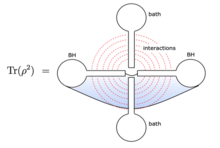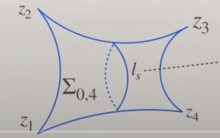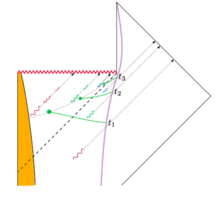Past Events
Journal club seminar: More quantum noise from wormholes
2020-08-26Title: More quantum noise from wormholes
Abstract: We are going to discuss the nice paper by Douglas Stanford "More quantum noise from wormholes". Sudip Ghosh will lead the discussion.
Journal club seminar: Twistorial superparticles, partial SUSY breaking and Higher spin fields on AdS(4)
2020-08-12Title: Twistorial superparticles, partial SUSY breaking and Higher spin fields on AdS(4)
Abstract: We are going to discuss the nice paper by Mikhail Plyushchay, Dmitri Sorokin and Mirian Tsulaia "Higher Spins from Tensorial Charges and OSp(N|2n) Symmetry". Mirian Tsulaia will lead the discussion.
Theoretical Physics Seminar: Karol Gietka
2020-08-07Theoretical Physics Seminar.
Speaker: Karol Gietka (Quantum Systems).
Title: "Quantum Simulators in Other Frames of Reference"
Journal club seminar: The spectrum of Laplacian on moduli space via Liouville theory
2020-08-05Title: The spectrum of Laplacian on moduli space via Liouville theory
Abstract: We are going to discuss the nice talk by Sarah Harrison on String Math 2020 conference "The spectrum on M_{0,4} via Liouville theory". Slava Lysov will lead the discussion.
Journal club seminar: Conformal higher spin gauge models in curved backgrounds
2020-07-29Title: Conformal higher spin gauge models in curved background
Speakers: Sergei Kuzenko and Michael Ponds
Abstract: Sergei Kuzenko and Michael Ponds from The University of Western Australia will tell us about conformal higher spin gauge models in curved background. The talk is based on their two recent papers "Generalised conformal higher-spin fields in curved backgrounds" and "New locally (super)conformal gauge models in Bach-flat backgrounds".
QG Group meeting: D-branes of higher-spin gravity?
2020-07-20QG group meeting.
Speaker: Yasha Neiman.
Title: "D-branes of higher-spin gravity?"
Journal club seminar: A short review of N=2 SUSY Quantum Mechanics
2020-07-15Title:A short review of N=2 SUSY Quantum Mechanics
Abstract: We are going to SUSY Quantum Mechanics. The good review of the subject is a paper by F. Cooper, A. Khare, U. Sukhatme "Supersymmetry and Quantum Mechanics". Mirian Tsulaia will lead the discussion.
QG group meeting: Symplectic Reduction in Field Theory
2020-07-13Title: Symplectic Reduction in Field Theory
Speaker: Slava Lysov
Abstract: We will briefly review the symplectic recution in finite dimensional case and generalization to the field theory with possible inclusion of the edge modes. We will apply these ideas to the BF-model and compare the results with the predictions of algebraic topology.
Theoretical Physics Seminar: Matthias Gohlke
2020-07-10Theoretical Physics Seminar.
Speaker: Matthias Gohlke (Quantum what's the Matter).
Title: "Kitaev's honeycomb model: an exactly solvable quantum spin liquid"
Journal club seminar: Recent Progress on Black Hole Information
2020-07-08Title: Recent Progress on Black Hole Information
Abstract: We are going to discuss String Theory conference talk by J. Maldacena "Review: Recent progress on the black hole information paradox". Slava Lysov will lead the discussion.









